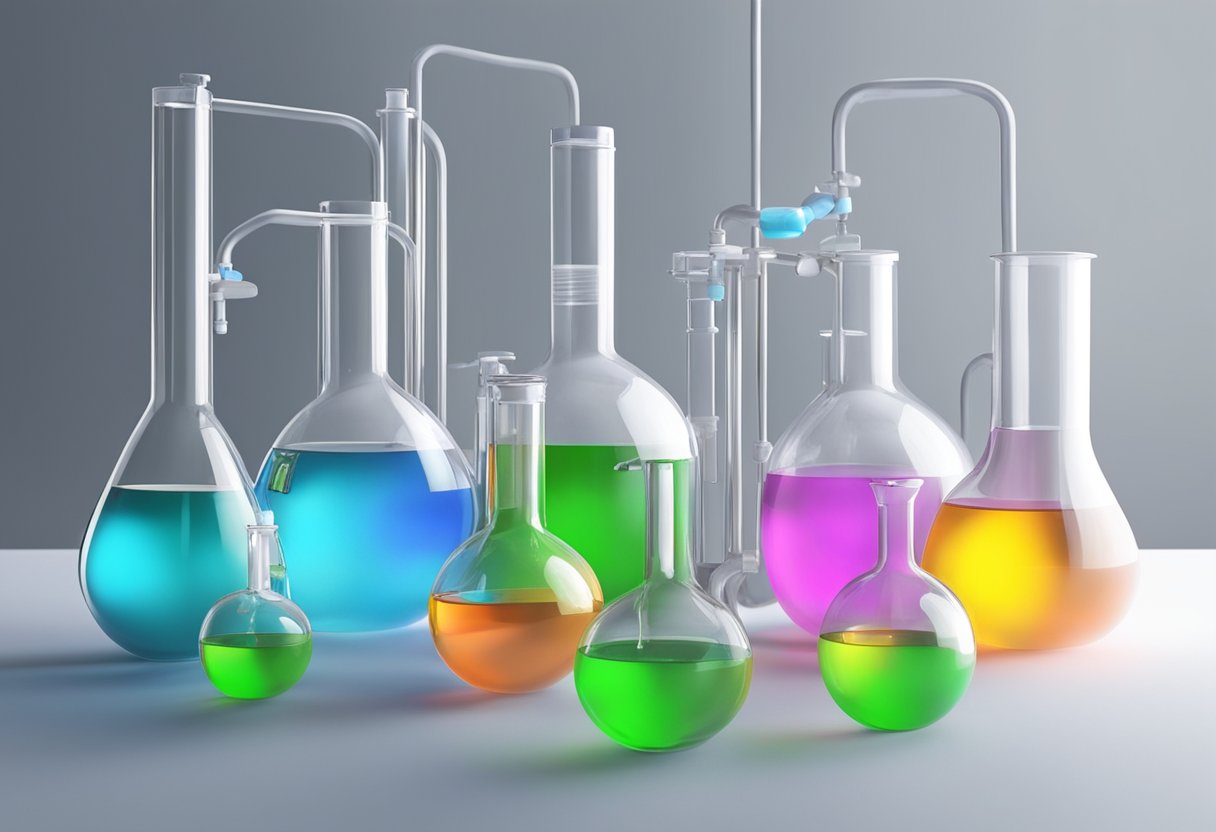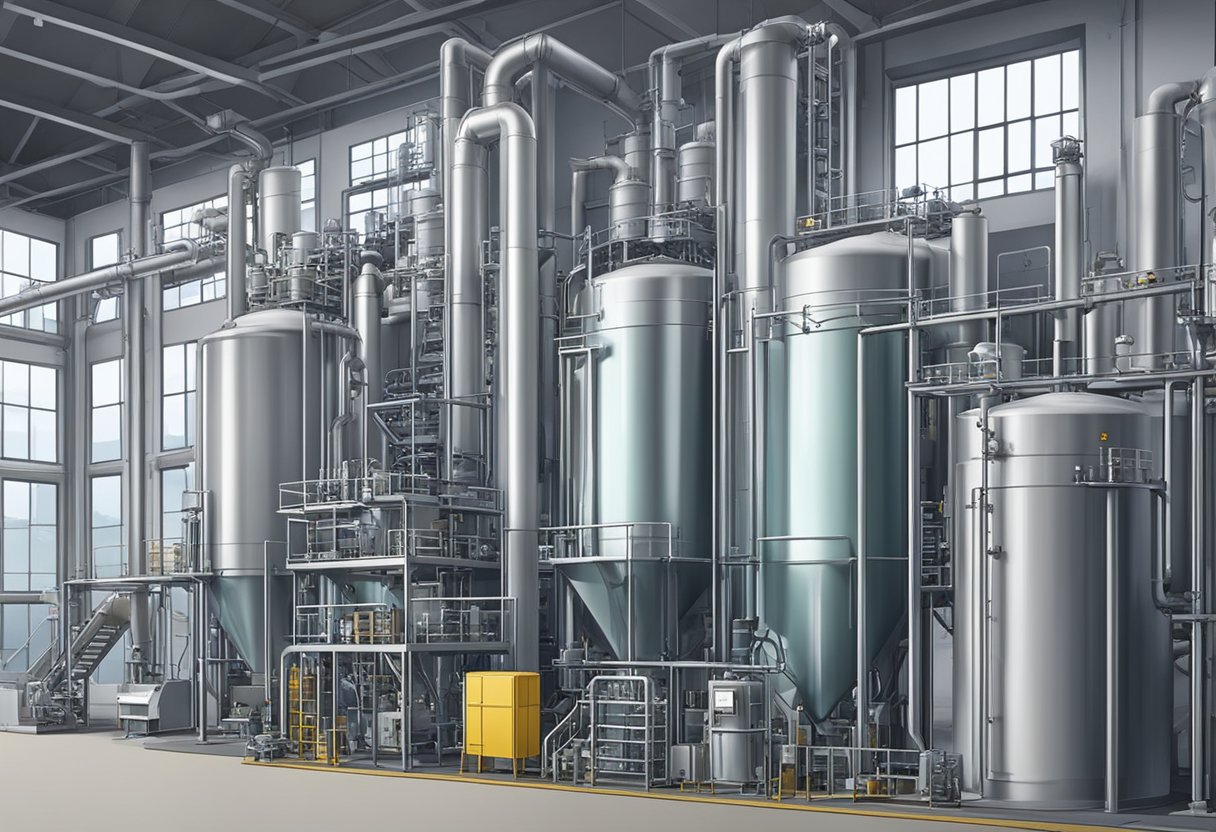Adipic Acid Application in Various Industries
19/01/2024
Adipic acid application is a white crystalline powder that is commonly used in the production of nylon. It is a dicarboxylic acid that is derived from petroleum and is used in a variety of applications. Adipic acid is also used as a food additive and in the production of polyurethane foams, plasticizers, and synthetic fibers.

One of the primary Adipic acid application of adipic acid is in the production of nylon. Nylon is a synthetic polymer that is used in a wide range of applications, including clothing, carpets, and tire cords. Adipic acid is used in the production of nylon 6,6, which is a type of nylon that is known for its strength and durability. In addition to its use in nylon production, adipic acid is also used in the production of other polymers, such as polyurethanes and polyester resins.
Another important Adipic acid application of adipic acid is as a food additive. It is used as a flavoring agent and a pH regulator in a variety of foods, including baked goods, dairy products, and beverages. Adipic acid application is also used as a buffering agent in pharmaceuticals and as a corrosion inhibitor in metalworking fluids. Overall, adipic acid is a versatile chemical that has a wide range of applications in various industries.
Chemical Properties

Molecular Structure
Adipic acid application is a dicarboxylic acid with the chemical formula C6H10O4. It is a white crystalline powder that is soluble in water and has a melting point of 152°C. The molecular structure of adipic acid consists of two carboxylic acid groups separated by a four-carbon chain. This structure makes adipic acid a suitable building block for the production of various polymers and resins.
Physical Characteristics
Adipic acid has a molecular weight of 146.14 g/mol and a density of 1.36 g/cm³. It has a pKa value of 4.41, which means that it is a weak acid. Adipic acid is hygroscopic, which means that it can absorb moisture from the air. This property can affect the physical properties of adipic acid-based products, such as their mechanical strength and dimensional stability.
Adipic acid is commonly used in the production of nylon 6,6, which is a high-performance polymer used in various applications, such as automotive parts, textiles, and packaging. It is also used in the production of polyurethanes, which are widely used in the construction, furniture, and automotive industries. Adipic acid is also used as a food additive, where it is used as a flavor enhancer and acidity regulator.
Overall, adipic acid’s chemical properties make it a versatile and valuable compound in various industries. Its molecular structure and physical characteristics make it suitable for the production of various polymers and resins, while its use as a food additive highlights its safety and versatility.
Industrial Synthesis

Adipic acid is a dicarboxylic acid that is primarily produced for use as a raw material in the production of nylon. It is commonly synthesized through the oxidation of cyclohexane or the hydrogenation of phenol.
Cyclohexane Oxidation
The majority of adipic acid is produced by the oxidation of cyclohexane. This method involves the use of nitric acid and air to oxidize cyclohexane to form a mixture of cyclohexanone and cyclohexanol. This mixture is then oxidized further to produce a mixture of adipic acid and other byproducts. The adipic acid is then separated from the mixture through a series of purification steps.
Phenol Hydrogenation
Another method for producing adipic acid is through the hydrogenation of phenol. This method involves the use of hydrogen gas and a catalyst to convert phenol to cyclohexanone. The cyclohexanone is then oxidized to produce a mixture of adipic acid and other byproducts. The adipic acid is then separated from the mixture through a series of purification steps.
Overall, the industrial synthesis of adipic acid is a complex process that involves several steps. The choice of method used for synthesis depends on various factors such as cost, availability of raw materials, and environmental considerations.
Plastics Production

Adipic acid is widely used in the production of various types of plastics. The following subsections describe the use of adipic acid in the manufacturing of nylon and polyurethanes.
Nylon Manufacturing
Nylon is a synthetic polymer that is commonly used in the production of fabrics, carpets, and other materials. Adipic acid is a key component in the manufacturing of nylon. It is combined with other chemicals, such as hexamethylene diamine, to create nylon 6,6, which is a type of nylon that is widely used in various industries.
During the production of nylon, adipic acid is first converted into a compound called adipoyl chloride. This compound is then reacted with hexamethylene diamine to form nylon 6,6. The resulting nylon has excellent mechanical properties, including high tensile strength and good resistance to abrasion and chemicals.
Polyurethanes
Polyurethanes are a type of polymer that are widely used in the production of various products, including foams, coatings, and adhesives. Adipic acid is used in the production of polyurethanes as a chain extender. It reacts with other chemicals, such as diisocyanates and polyols, to form polyurethane polymers.
The addition of adipic acid to polyurethane formulations can improve the mechanical properties of the resulting products. For example, it can increase the tensile strength and hardness of polyurethane foams. Adipic acid can also improve the adhesion of polyurethane coatings to various substrates.
In conclusion, adipic acid is an important component in the production of various types of plastics. Its use in the manufacturing of nylon and polyurethanes results in materials with excellent mechanical properties and a wide range of applications.
Food Industry
Flavoring Agent
Adipic acid is commonly used as a flavoring agent in the food industry. It is often added to processed foods such as baked goods, beverages, and snacks to enhance their taste and aroma. Adipic acid is a white crystalline powder that is soluble in water and has a slightly tart taste. It is often used in combination with other flavoring agents to create a unique flavor profile.
Acidulant
Adipic acid is also used as an acidulant in the food industry. It is added to foods such as jams, jellies, and canned fruits to increase their acidity and improve their flavor. Adipic acid is a safe and effective alternative to other acidulants such as citric acid and tartaric acid. It is also used in the production of carbonated beverages to provide a tart taste and to help regulate the pH level of the drink.
In summary, adipic acid is a versatile ingredient that has many applications in the food industry. It is commonly used as a flavoring agent and acidulant in a variety of processed foods. Its unique properties make it an ideal ingredient for enhancing the taste and aroma of food products.
Environmental Impact
Biodegradability
Adipic acid is considered to be biodegradable, meaning it can be broken down by microorganisms in the environment. This is a positive attribute as it reduces the amount of waste that accumulates in landfills and other areas. However, it is important to note that the rate of biodegradation can vary depending on the conditions of the environment. For example, adipic acid may biodegrade more slowly in anaerobic conditions, such as those found in landfills, compared to aerobic conditions.
Emission Control
The production of adipic acid can result in the emission of pollutants such as nitrogen oxides (NOx) and sulfur dioxide (SO2). These emissions can contribute to air pollution and have negative impacts on human health and the environment. To mitigate these emissions, many adipic acid production facilities implement emission control technologies such as scrubbers and catalytic converters. These technologies can help to reduce the amount of pollutants released into the atmosphere.
Overall, while adipic acid has some potential negative environmental impacts, it is considered to be a relatively safe and sustainable chemical. By implementing proper production and disposal practices, the environmental impact of adipic acid can be minimized.
Market Analysis
Demand Trends
Adipic acid is a key ingredient in the production of nylon, polyurethane, and other synthetic materials. The demand for adipic acid is primarily driven by the growth of the automotive and construction industries. In recent years, there has been a significant increase in demand for adipic acid due to the rise in construction activities and the increasing demand for lightweight and fuel-efficient vehicles.
According to market research, the global adipic acid market is expected to grow at a CAGR of 4.5% during the forecast period (2024-2029). The Asia-Pacific region is expected to dominate the market due to the increasing demand for adipic acid from countries such as China and India. The demand for adipic acid in North America and Europe is also expected to rise due to the increasing demand for lightweight materials in the automotive industry.
Supply Chain
Adipic acid is primarily produced through the oxidation of cyclohexane or cyclohexanol. The raw materials required for the production of adipic acid include benzene, cyclohexane, and nitric acid. The production of adipic acid is concentrated in a few countries, with China, the United States, and Germany being the largest producers.
The supply chain for adipic acid is complex and involves several stages, including raw material procurement, production, and distribution. The major players in the adipic acid market include Asahi Kasei Corporation, BASF SE, INVISTA, Lanxess AG, and Radici Group. These companies have a strong presence in the market and are focused on expanding their production capacities to meet the growing demand for adipic acid.
In conclusion, the adipic acid market is expected to witness significant growth in the coming years due to the increasing demand from the automotive and construction industries. The supply chain for adipic acid is complex and involves several stages, with a few countries dominating the production. The major players in the market are focused on expanding their production capacities to meet the growing demand for adipic acid.
Regulatory Framework
Adipic acid is regulated by various agencies and organizations to ensure its safe and effective use in various applications. The regulatory framework for adipic acid includes guidelines for its usage and safety protocols.
Usage Guidelines
Adipic acid is widely used in the production of nylon, polyurethane resins, and other industrial applications. The usage guidelines for adipic acid are established by regulatory agencies such as the Environmental Protection Agency (EPA) and the European Chemicals Agency (ECHA).
According to the EPA, adipic acid should be used in accordance with good manufacturing practices to minimize exposure to workers and the environment. The agency recommends that workers handling adipic acid wear appropriate protective equipment, such as gloves and goggles, and follow standard operating procedures to prevent accidents and spills.
The ECHA also provides guidelines for the safe use of adipic acid, including recommendations for handling, storage, and disposal. The agency advises that adipic acid should be stored in a cool, dry place away from sources of ignition and incompatible materials. It should also be kept out of reach of children and animals.
Safety Protocols
Adipic acid is considered to be a low-toxicity substance, but it can still pose health and safety risks if not handled properly. The safety protocols for adipic acid are established by regulatory agencies such as the Occupational Safety and Health Administration (OSHA) and the National Institute for Occupational Safety and Health (NIOSH).
According to OSHA, workers handling adipic acid should be trained on its safe use and handling, including proper storage, handling, and disposal procedures. The agency also recommends that workers wear appropriate personal protective equipment, such as gloves and respiratory protection, to prevent exposure to the substance.
NIOSH also provides safety guidelines for adipic acid, including recommendations for exposure limits and monitoring. The agency advises that workers should be monitored for exposure to adipic acid and that exposure levels should be kept below the recommended limits.
Overall, the regulatory framework for adipic acid is designed to ensure its safe and effective use in various applications while minimizing health and safety risks to workers and the environment.
Future Prospects
Technological Advancements
The adipic acid industry is expected to witness significant growth in the coming years due to the increasing demand for nylon 6,6, which is a major application of adipic acid. Technological advancements in the production of adipic acid have led to improved efficiency and reduced costs, making it a more viable option for a wider range of applications.
One such advancement is the development of bio-based production methods for adipic acid. These methods use renewable resources such as biomass or waste products to produce adipic acid, reducing the environmental impact of the production process and increasing sustainability.
Another technological advancement is the use of catalytic processes to produce adipic acid. This method allows for the production of adipic acid with fewer byproducts and less waste, leading to a more efficient and sustainable production process.
Emerging Applications
Adipic acid has a wide range of applications beyond its traditional use in nylon 6,6 production. As technological advancements continue to improve the efficiency of adipic acid production, new applications are being explored.
One emerging application is in the production of polyurethane foams. Adipic acid can be used in the production of these foams, which are used in a variety of applications such as insulation and cushioning.
Adipic acid also has potential applications in the production of biodegradable plastics. As the demand for sustainable and environmentally-friendly materials increases, the use of adipic acid in the production of these materials may become more widespread.
Overall, Adipic acid application the future prospects for adipic acid are promising as technological advancements continue to improve the efficiency and sustainability of its production, and new applications are explored.




